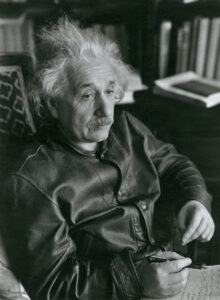Chapter 6 of potential hindrances to our creative development:
00VI: Art is learning to take the idea in our head (imagination means ‘picturing it’) and executing that idea in material form.
How do you consider your imagination when you make art (or ‘something’, if art is too lofty a term)? Do you have a picture in your mind that you then try to bring into physical reality? How’s that going for you? Does it usually work out or do you find yourself saying things like, “I can never make what I want; I can never make what I imagine” or “it always looks so much better in my mind.” Do you ever feel that your skills/abilities won’t ever live up to what you imagine? Or maybe you don’t ‘picture’ anything in your mind and feel at a loss as to how to begin. Does any of this build frustration and keep you from creative dabbling?
This presumption was in my way for a long time. It took one of my mentors to point it out in a class where he opened with, “You may not be the artist you think you are.” He went on to tell us that anything we ‘pictured in our mind’ is constantly shifting and changing: “And even though it may look like a drawing or painting, it isn’t. It’s not a drawing it’s imagination.” It was like a gong went off and I could feel something in me start to bend in the wind. This insight opened up so much space for possibility, and it took me a minute or so to understand how or why.
I wasn’t the only one affected by this wisdom. A friend of mine recalls this professor saying to him something like, “You’re frustrated that what is on your canvas looks different than the image you have in your mind. The image in your mind is a product of your mind, the image on your canvas is a product of paint. This difference is what happens when something goes from the mind to canvas…You have to let the paint be paint.” This ‘allowing’ is something I have discussed at length already, but it’s going to keep coming up (our ‘western culture’ is sort of one big collective control freak so we need constant nudging to snap out of it).
As it turned out, I definitely wasn’t the artist I thought I was and I ended up making work that was beyond my wildest imagination. I wanted to be a painter and I thought I knew for sure what kind of paintings I wanted to make. But when I followed what I truly loved, I ended up making very strange and cryptic things with hidden messages (see my About page). After receiving this insight that any picture in my mind is only ever a shifty cloud-like form, it helped me recognize a clear distinction between work I had made without a rigid composed plan and work that I had tried to make while clinging to an image in my mind. The unplanned work was fun, mysterious, full of surprises and at a higher level than I could comprehend. In contrast, my work made from what I took to be a fully formed idea in my head was resistant, frustrating, disappointing and exhausting; holding to an image meant I could fail.

Albert Einstein by Lotte Jacobi, 1938. University of New Hampshire Museum of Art
This was fairly baffling to me in terms of what I thought of imagination. I’m one of those people who trusts the words of Albert Einstein who said “I am enough of the artist to draw freely upon my imagination. Imagination is more important than knowledge. Knowledge is limited. Imagination encircles the world.” So why did my imagination feel like it barely encircled my desk? And how was I able to be more creative without clearly imagining the work first? When I take a closer look at Einstein’s words, I sense that my use of my imagination was misguided and a bit too tangled up in knowledge.
This raises an important question: How is imagination different than knowledge?
I have dreamed of you so much that you are no longer real.
ROBERT DESNOS
*Disclaimer: No copyright infringement intended. I do my best to track down original sources. All rights and credits reserved to respective owner(s). Email me for credits/removal.
